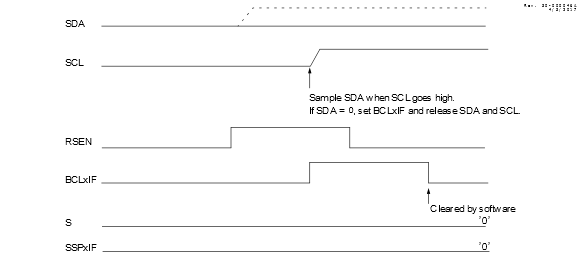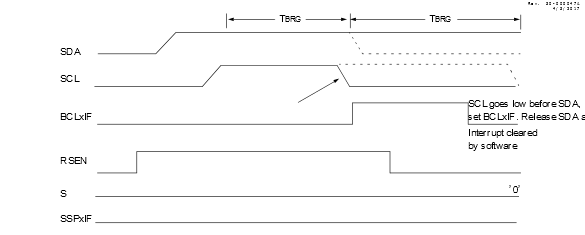During a Repeated Start condition, a bus collision occurs if:
- 1.A low level is sampled on SDA when SCL goes from low level to high level (see Figure 1).
- 2.SCL goes low before SDA is asserted low, indicating that another
host is attempting to transmit a data ‘
1’ (see Figure 2).
When the user releases SDA and the pin is allowed to float high, the BRG is loaded with SSPxADD and counts down to zero. The SCL pin is then deasserted and when sampled high, the SDA pin is sampled.
If SDA is low, a bus collision has occurred (i.e., another host is
attempting to transmit a data ‘0’, see Figure 1). If
SDA is sampled high, the BRG is reloaded and begins counting. If SDA goes from high-to-low
before the BRG times out, no bus collision occurs because no two hosts can assert SDA at
exactly the same time.

If SCL goes from high-to-low before the BRG times out and SDA has
not already been asserted, a bus collision occurs. In this case, another host is attempting
to transmit a data ‘1’ during the Repeated Start
condition (see Figure 2).
If, at the end of the BRG time-out, both SCL and SDA are still high, the SDA pin is driven low and the BRG is reloaded and begins counting. At the end of the count, regardless of the status of the SCL pin, the SCL pin is driven low and the Repeated Start condition is complete.
